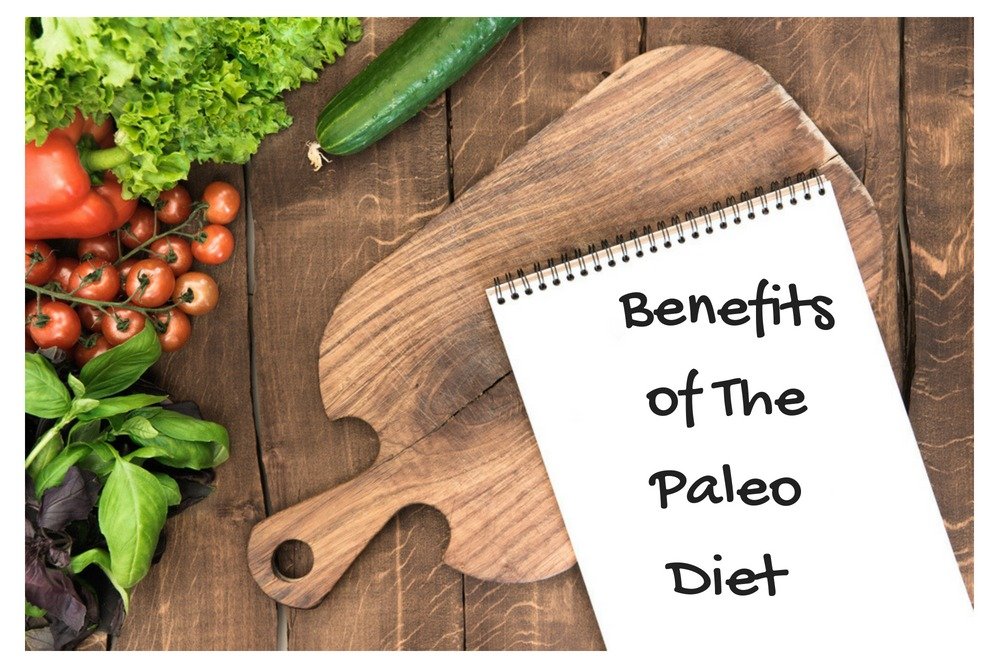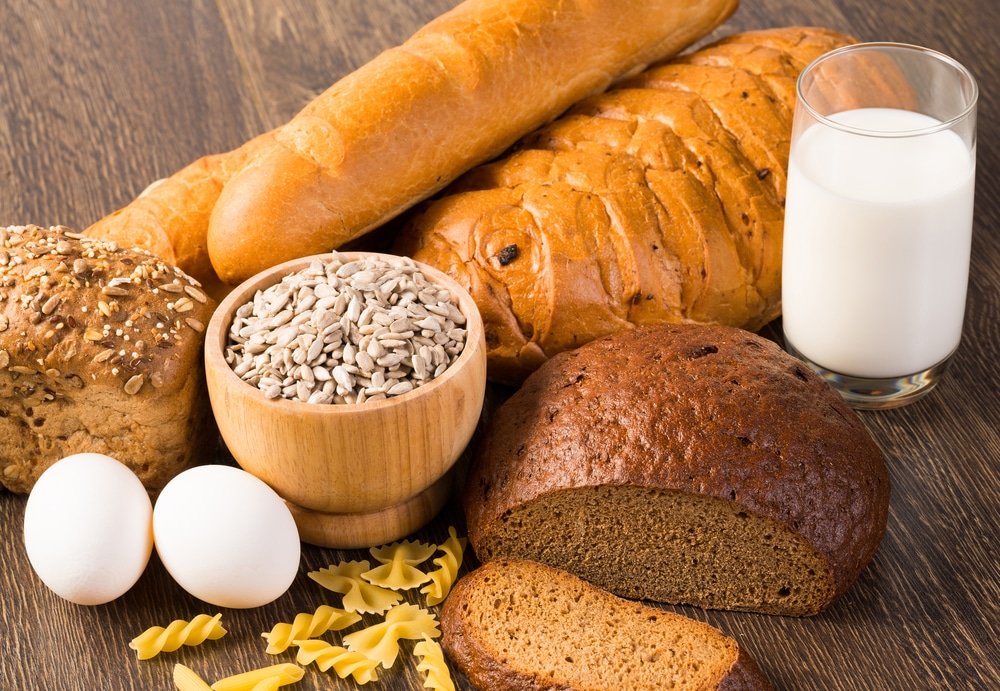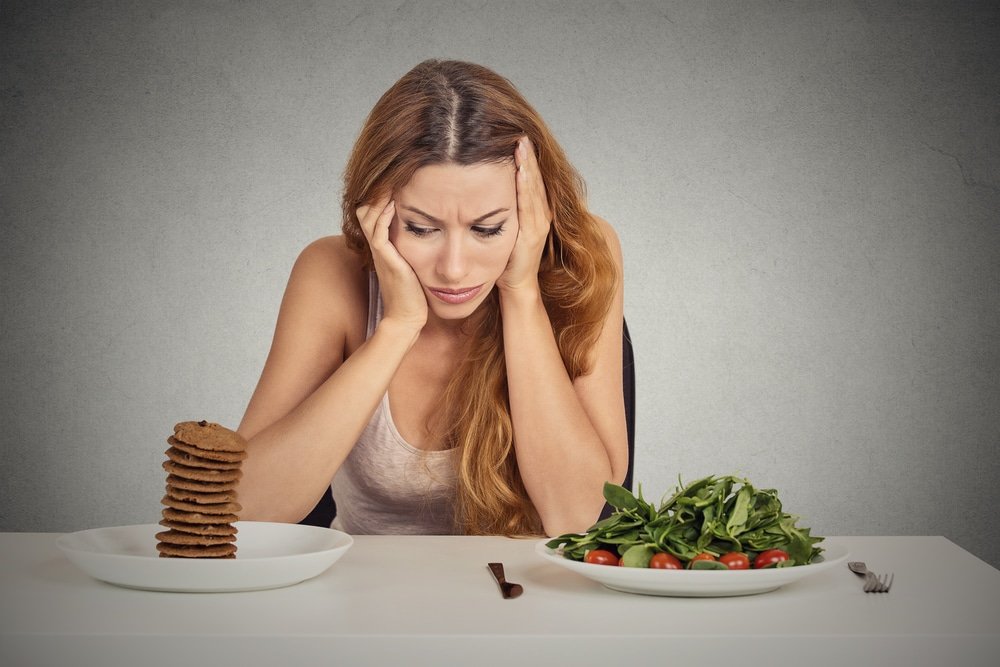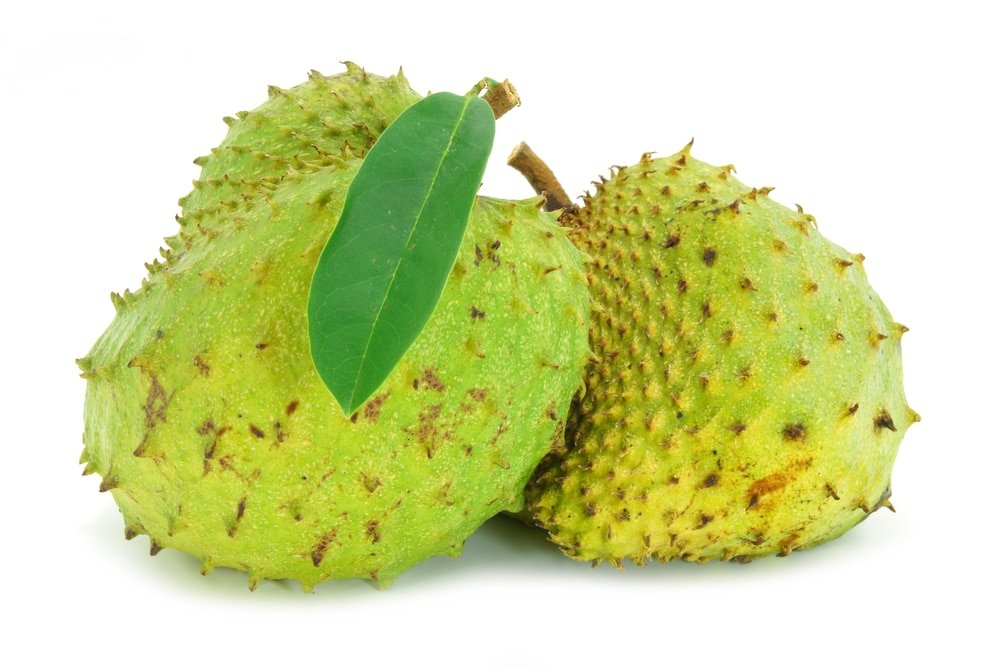The popularity of the paleo diet has absolutely skyrocketed over the past 10 years. Is this a bad thing? Not at all. As more and more people become health-conscious and actively seek out ways to improve their lives, the switch to the paleo diet will only become greater.
Wondering if the paleo diet is for you? You’ll have all your questions answered after reading this detailed guide to the end!
What Is The Paleo Diet?
The paleo diet is called a lot of things, but the one you are likely to hear most often is the caveman diet. In a nutshell, this sums up what the paleo diet is to a large extent. You can consider the paleo diet a complete “caveman approved” diet plan (GEICO, so easy a caveman can do it? HA), in the sense that if they did not eat it back then, you probably shouldn’t either.
However, there are important distinctions that you have to make between what the paleo diet was thousands of years ago, and where we are now. For instance, our brains have evolved beyond what it was during the Paleolithic era, so we don’t expect you to go out hunting wild game and eating them raw as is. Unless you are deliberately looking to come down with a case of salmonella, you know better.
What Is The Basic Premise Behind The Paleo Diet?
This is a great question, and one that leads many people to starting the paleo way of life right away. What is the answer to this? For simple comparison, compare differences between our predecessors, and where we are now.
To put this into context, even though the difference in years may seem like a lot, genetically we haven’t changed that much. However, based on fossil evidence, it is clear as day that humans that lived back in those days had superior physiques, characterized by a lean body, well-defined muscles and were extremely athletic and flexible.
In direct contrast to what we are now-overweight, sedentary, suffering from chronic stress disorders and being killed off by non-communicable diseases all related to poor lifestyle choices.
Why has so much changed between then and now? It has to do with how society has evolved, and based on this the development of sustainable agriculture.

Back in the Paleolithic era, humans were primarily hunter gatherers, having to go on long expeditions in order to ensure the next meal could be provided. After the development of small tools, humans began to form small societies, and slowly evolved so that food could be made available conveniently, without the need to go hunting every time.
This was a great development for mankind, but one that brought with it problems our ancestors never foresaw. One such problem, and the major point the paleo diet addresses is the overreliance on various grains, which today we have found is a major source of metabolic disease and preventable health conditions.
Our diets changed from one that was heavily reliant on meat, nuts and occasional fruit, to being dependent on rice and endless grains.
By stepping back in time a bit, to before we traded our health for the convenience of these grains, the paleo diet can help improve your well-being by leaps and bounds.
Benefits of The Paleo Diet

Adapting to a specific diet type would be useless unless it brings something noticeable and measurable to the table. When it comes to the paleo diet, its benefits are plenty, and ones you can begin to observe in mere weeks after switching to it. You can expect to see things such as:
1. Weight Loss
Many grain-based products, especially those made from wheat, are pro-inflammatory in nature. What this means is that the increase processes that have a strong inflammatory complement within the body, causing dysfunction of normal processes to a great extent.
Elimination of these products removes a significant amount of our daily carbohydrate intake, strongly associated with increased weight loss. By exerting greater influence over the hormone insulin, we can create a favorable scenario for utilization of excess body fat stores.
2. Improves Energy Levels
Wheat products contain gluten, a protein that many people possess mild allergies to. These allergies do not necessarily manifest as visible hives, or rashes, but rather do their damage overtly, affecting everything from normal energy production to proper glucose uptake and utilization.
The end result causes you to feel sluggish, mentally unclear, and groggy and what can only be classified as lethargic. Many people that eliminate grains from the diet report improvements to their energy levels, as the strangulating hold they have on your metabolism is released.
3. Improved Blood Glucose Management
Grains are a significant contributor to the number of newly diagnosed cases of type II diabetes. The fake health notion that whole grains, or whole wheat products are excellent for diabetics and management of blood glucose levels does far more damage than good, as even though their glucose release patterns may be different, studies have failed to show any noticeable advantage in consuming one over the other[R].
What does this mean? In a nutshell whether you consume whole-wheat or white flour products you will adversely affect your blood glucose balance. Restriction of these products will only lead to significant improvements in the control you have, since the calories provided from these foods account for well over 50% of many peoples diet.
In areas where tradition demands that the use of wheat products be continued, not surprisingly it is very common to see the general population crippling with issues related to poor blood glucose control, or metabolic disease.
4. Reduces Markers For Heart Disease
Fats are not the only cause of heart disease, nor should they be considered the primary one. Indeed, low-quality artificial Trans fats offer no benefit for the body, and should be kept to an absolute minimum, but by far the greatest cause of heart disease are pro-inflammatory foods, often times grains such as wheat, and high fructose corn syrup products (soda) [R].
Inflammation accelerates the deposition of atherosclerotic plaques on the inside of blood vessel walls, narrowing the effective space blood has to traverse. In addition, formation of small platelet aggregates is increased under inflammatory mediators, which means that they more easily adhere to fatty deposits on walls, where they can initiate a hemorrhagic episode.
This is how heart attacks and strokes occur, owing to blockages in critical blood vessels, impairing oxygen flow to the target tissue and in some events causing rupture of the blood vessel and blood loss.
5. Nutrition Intake Soars
Wheat products are at best only mild contributors to nutrition. While whole-grain wheat contains a few minerals, most people consume bleached white flour products that have all the nutrition removed and traded for a few drizzles of artificial nutrition fortification.
The foods you consume on a paleo diet, owing to the large variety, will definitely improve your nutritional status thanks to the range of colors you consume. Think of the loads of vegetables, and fruits you will be consuming on the diet. It is important to note that the paleo diet is not low-carb per se, but most people adapt the modified version by restricting intake of fruits as well.
Primitive man did not necessarily restrict his intake of fruits, as they were a valuable source of nutrition at that time. Plus, given that a small amount of natural sugars won’t likely do any damage to your body, you have no reason to avoid the nutrition these foods can offer your body.
6. Reduced Digestive Issues
The digestive discomfort many people experience on a regular basis is commonly due to a low-level allergy that has not been diagnosed, commonly owing to gluten [R] or dairy products. The paleo diet advocates for elimination of both of these foods, with a significant number of followers reporting almost absolute elimination of digestive issues such as bloating, excessive gas, constipation or diarrhea after following the paleo diet for a short period of time.
7. Diminished Symptoms Of Inflammatory Disease
Inflammatory diseases is diverse, and can affect numerous body processes. For convenience sake, we shall restrict our discussion to the joints and intestines. Persons that of consumed grain-based foods and dairy for their entire lives and experience symptoms related to low-grade food allergies, such as joint pain, rheumatoid arthritis[R] or even more full-fledged inflammatory bowel disease or colitis, noticed an almost immediate reduction in symptoms after eliminating those foods from the diet.
Dairy and wheat-based products are some of the worst pro-inflammatory foods, which you only stand to benefit from removing as part of your diet.
8. Improved Immunity
While the primary purpose of the immune system is to protect the body from foreign pathogens, it also needs to function efficiently to ensure normal inflammatory processes are maintained. In conditions such as inflammatory bowel disease, or even rheumatic arthritis, the body’s immune system is on the state of high alert, inadvertently attacking the body’s own organ systems, and causing failure.
You can think of this as a security guard that is high on cocaine while on the job. Yes, he will be stimulated and alert, but at the same time he is likely to be so trigger-happy that should you attempt to enter your own home, you’d be shot on the spot.
Other aspects related to improved immunity[R] include decreased seasonal allergies, and reduced frequency of asthmatic attacks and triggers.
9. Improves Brain Performance
As previously mentioned, even though the paleo diet isn’t necessarily low-carb, it is much lower in carbohydrates than the typical Western diet. Over-reliance on carbohydrates and glucose adversely affects not only energy levels, but also executive brain functioning, sometimes contributing to serotonin insensitivity in the brain. These symptoms are all thought to be due to the development of Celiac Disease, brought on by gluten consumption.
This is believed to contribute to the development of binge eating disorders, as the constant need for that short lived serotonin spike causes individual to constantly seek out high carbohydrate foods, which typically contain dairy or wheat as ingredients.
After eliminating these foods from your diet, you will feel horrible. However, as brain chemistry changes (think of this as a withdrawal period), and your reliance on these foods for a short-term high diminishes, you will find yourself being able to concentrate and focus much more efficiently, along with better levels of cognition and day to day functioning[R].
10. No Hunger
Even though the paleo diet is relatively low in sugar, it is not one of those diets that forces you to count every single calorie you consume, as you are allowed to eat generous amounts of meat and vegetables, helping to keep you filled until you can have a snack or meal time comes around.
You can still lose weight from a diet that contains a moderate amount of protein and higher fats, as the body optimizes its metabolism to increase utilization of these nutrients for energy. Added to the fact that protein has a very high thermic effect, and what results is a negative energy balance after consuming foods rich in those nutrients.
To put it into perspective, consuming 100 Cal worth of protein equates to a net amount of about 70 Cal, since the body uses the other 30 Cal (or between 15-30%) to facilitate its processing[R].
Acceptable Foods On The Paleo Diet

We aren’t cavemen anymore, so people need to understand that you do not need to remain limited to the foods that were available to them during that era. However, a little common sense and a blended approach is the way to go when consuming foods. The following foods are excellent, and widely accepted while on the paleo diet:
1. Meat
Meat is a cornerstone of the paleo diet, which is why self-proclaimed carnivores love it so much. As much meat as you can handle – of course, freshly cut produce is far better than preserved ones.
Feel free to eat the following
- Beef
- Chicken
- Turkey
- Pork
- Fish
- Occasionally bacon (due to its high nitrate content during the preservation stage)
- Eggs
2. Fruit
While most fruit is fair game on the paleo diet, the emphasis lies primarily on fresh fruit. The hunter gatherers during the Paleolithic era relied primarily on berries, which you will find are very common on the paleo diet. You can also feel free to consume many other types of fruits, but try to focus on ones with a lower glycemic index for overall health.
3. Nuts
Almonds, pistachio nuts, walnuts, cashews and pecan nuts are all fine for consumption on the paleo diet. Peanuts are technically legumes, and not accepted on the diet.
4. Vegetables
Most vegetables are acceptable on the paleo diet, but greater priority is given to low-carb and non-starchy varieties. Feel free to have as much of spinach, lettuce, broccoli, cabbages, Brussels sprouts, asparagus and green beans that you like. Sweet potatoes are also acceptable, even though they are relatively higher than most other vegetables, but white potatoes are not (being considered an anti-nutrient food).
5. Natural Cooking Oils
These include coconut, olive oil, walnut oil, grape seed oil and grass fed butter.
6. Assorted Seeds
Including pumpkin seeds, sunflower seeds, flaxseed and Chia seeds.
Foods To Avoid On The Paleo Diet

The main take-home point of the paleo diet is to encourage consumption of foods that are for the most part considered natural. Thus, the endless varieties of artificial sugars and wheat products we have at our disposal need to be excluded. In particular, stay away from the following:
1. Dairy Products
While cheese and butter are both dairy products that are acceptable on the paleo diet, all other dairy products should be avoided. Low fat dairy products are especially frowned upon, as the removal of natural fat forces the addition of synthetic additives in order to preserve palatability.
2. Grains and Others
- Grains: These include products with made from flour, in addition to barley, rye and spelt flour.
- Concentrated Sugar Products: These include soda made from high fructose corn syrup, in addition to many hard candies, packaged treats and even ice cream.
- Legumes: Includes peanuts, lentils and beans.
- Processed Oils: These include synthetic trans-fat products, in addition to canola oil and soybean oil to name a few.
3. Artificial sweeteners
While these may not have an immediate impact on blood glucose levels, they still contribute significantly to metabolic dysfunction[R]. Avoid artificial sweeteners such as xylitol, aspartame, and sucralose to name a few.
4. Grey Area Foods
While for the most part it is clear what we can and cannot have on the paleo diet, there are certain foods that require special exemptions, or that were synthetically made but have high nutritive value. Good examples of these foods include dark chocolate, which retains the highest level of natural flavonols and wine, a great source of antioxidants and other compounds that can positively influence health.
5. Beverages
Beverages should include water, unsweetened tea and unsweetened coffee. While fruit juices can be considered fair game, the problem is the number of fruits you would take to make a glass of such juice can be massive, and in like manner result in you having to consume a boatload of sugar. For this reason, just eat an occasional piece of food or two and consider that your natural juice.
Having Success with Paleo Diet

While eating a high number of carbohydrate foods is never good, the body does in fact miss it when you cut off its supply. Thus, even though hunger is very rare on the paleo diet initially you may still experience adverse effects. These are the best tips you can take advantage of to ensure your transition is a seamless one:
1. Don’t Skip Meals
While it is ingrained into our minds that we need to have three meals per day, this number can even go as high as seven, if you choose to remove the distinction between what constitutes a meal and snack. Think of it this way; instead of having one big lump sum for lunch, how about splitting it into two portions and having some 10 AM, and the rest at 1 PM?
This way, you have more control over what you eat at each session, and ensure optimal blood glucose balance and satiety from consumption of your food.
2. Consume A Different Colored Vegetable/Fruit Each Time You Eat
Owing to the abundance of vegetable and fruit choices you’re offered on the paleo diet, it is easy to keep having the same thing over and over just because you like it. A better option is to color code your meals. So, for lunch you may have green vegetables, and for breakfast you may have an orange fruit, and so on to ensure you mix things up.
Remember, color is a good indication of different compounds contained within the plant products, so eat the rainbow!
3. Have Protein And Fats With Each Meal
You can eat as many vegetables and fruits as you want, but chances are you always feel a bit hungry unless you fortify it with protein and fats. In addition to being critical to the overall success of the paleo diet, these foods are extremely satisfying, helping to slow the absorption of glucose in the blood, and blunting appetite for a number of hours.
You’re more likely to not have an appetite when the next meal time comes around if you have something with protein and fat at each sitting.
Difficulties With The Paleo Diet

While the paleo diet is great for overall health, that’s not to say that it’s without its fair set of challenges. In general, the longer you follow it the less of an issue they become, but early on you need to recognize them and deal with them in a timely manner to avoid failure. Keep an eye for the following:
1. Low Energy Levels
Similar to the ketogenic diet or many lower carb diets, the loss of wheat products and dairy is considered a very big blow to many people. Even though the number of people that possess low-grade allergies to these two foods is absolutely staggering, ignorance is bliss!
To get past this threshold, initially it is acceptable to consume a bit more fruits. These will help to compensate for the carbohydrates your body so badly craves, slowly tapering the number of servings you have per day to an acceptable amount until you reach your desired quantity.
2. It’s Expensive
One of the most common reasons people resort to junk food is their affordability. By using low quality and easily accessible ingredients, manufacturers of such products are able to market them to the most economically challenged individuals, only propagating a cycle of ill health.
Shopping for the paleo diet can get expensive, as you will be buying a significant amount of fresh fruits and vegetables, preferably organic, along with high quality animal products. Wastage under such circumstances is advised against, or your wallet will feel the weight of it.
3. Not Vegetarian Friendly
Vegetarians are hard-pressed to find suitable sources of protein, and with the removal of foods such as beans and the ever popular soy based products, it just got even harder. Though it is possible to meet the minimum recommended intake via supplementation with protein powders, this to can be very expensive and limiting. For best results, you will need to consume some amount of animal-based products to ensure all your needs are met.
Paleo Diet – Summary
The popularity of the paleo diet is unlikely to waiver over the foreseeable future, since as more people get actively involved in their health and try to improve it, it will stand out as an attractive option. Our forefathers did it and we are still here, so it had to work right?

Join the 7‑Day “Better Gut” Plan
Pop in your email and we’ll send Lesson 1 + the printable list.









